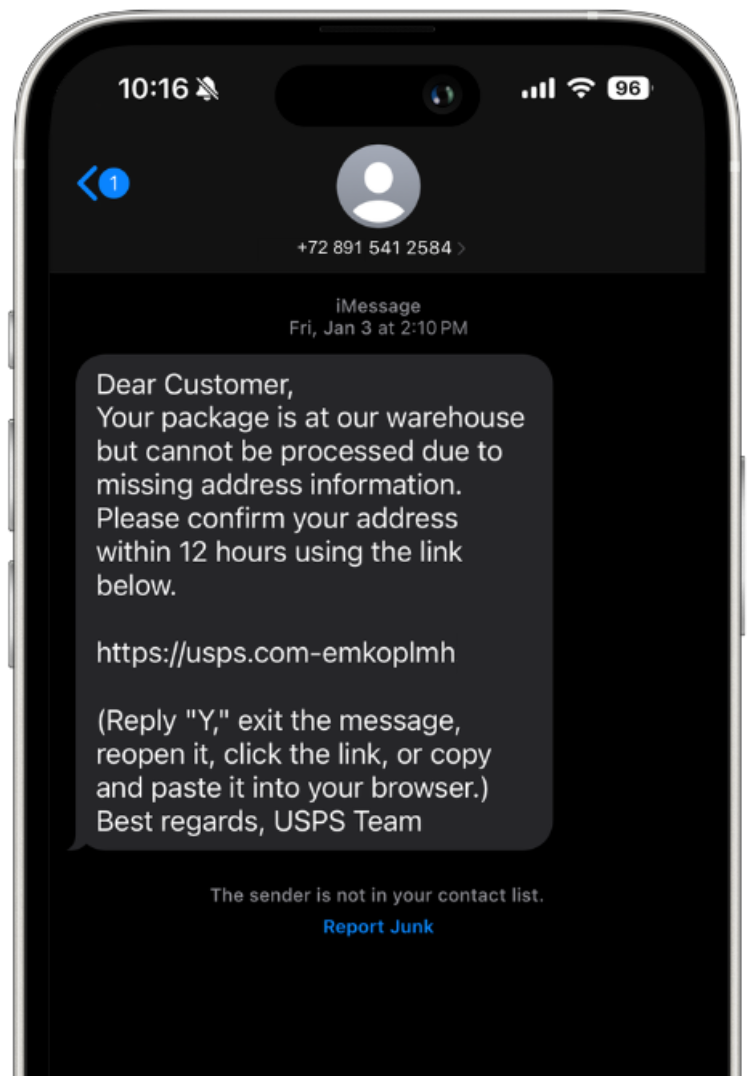You chose incorrectly
Allow us to point out what gives this away as the wrong choice.

Smishing attempts are similar to Scareware; they want to scare you or trick you into clicking a harmful link.
- Odd Sender: Anytime a phone number is extra long and not formatted how you’re used to seeing automated texts, don’t trust it.
- Fishy Subject: Does the content of the message seem off? “Missing address information?” If the address information was missing from a package, it would automatically be returned to the sender. The shipping company would not text you for the rest of the address.
- The second thing to ask yourself is: “Did I order a package recently?” In the age of online ordering, you may have. It can be beneficial to consider what courier delivery companies you normally receive packages from: FedEx, USPS, UPS, etc. If you don’t normally receive packages from the USPS, that can also be a red flag.
- NEVER reply to a suspicious text.
- Clock’s Ticking: “Please confirm your address within 12 hours using the link below.” If a text, email, or anything is telling you that you have a very short window… or else: it’s a scam.
- If something is asking for your address, you need to vet the legitimacy of the requester thoroughly.
- Giving out your address purposefully, or accidentally, to a cyber criminal could result in a plethora of horrible situations. They could potentially gain access to certain accounts of yours if they have your login information from breaches; they could send potentially dangerous packages to your address; or they could even visit your home. NEVER give out your address to out-of-the-blue requests.
- Suspicious Link: By now, any link that doesn’t begin and end normally should be a red flag.
- This link begins somewhat legitimate, then falls off on the backend with “emkoplmh.”
- Navigate to a web browser, search the posed entity, and find their official site to verify.



 End the Game
Click here to stop the game and find more information on our offerings!
End the Game
Click here to stop the game and find more information on our offerings!  Try Again
See if you can spot the legit text now! (One more time!)
Try Again
See if you can spot the legit text now! (One more time!)